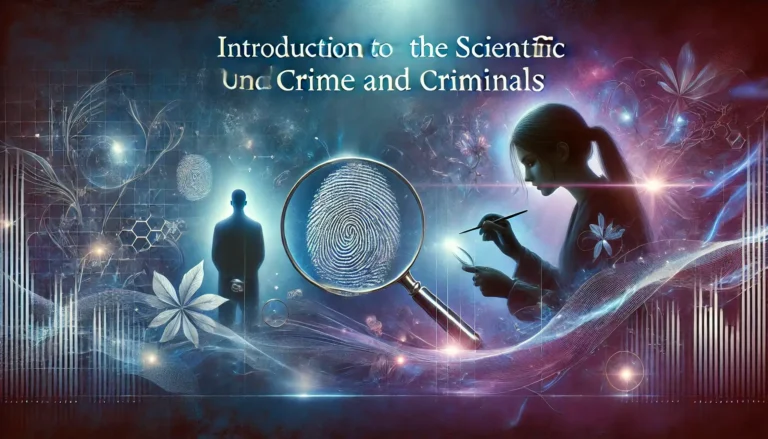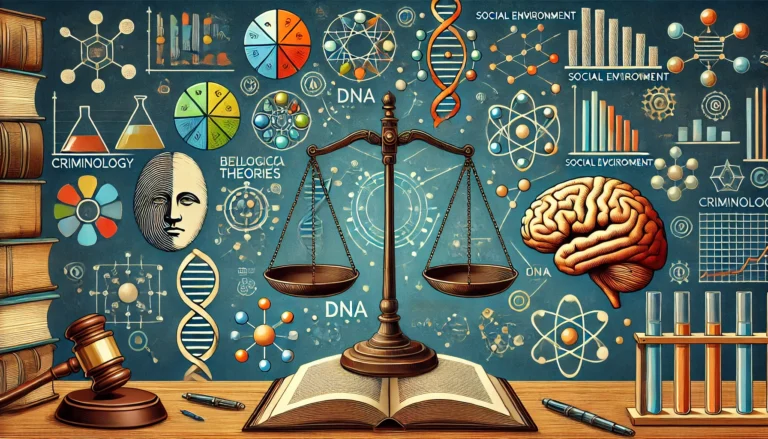Enrico Ferri’s theory of criminology
Personal Background and Education
Born in Italy in 1856 during a period of significant social and political transformation, Enrico Ferri pursued studies in law and social sciences. His early academic environment emphasized scientific inquiry and experimentation. Ferri’s formative years were heavily influenced by his mentor, Cesare Lombroso, regarded as the founder of scientific criminology.
Influence of Scientific Thinking
Ferri was well-versed in natural and social sciences, driving him to merge these disciplines in his efforts to understand crime. He believed that limiting criminological studies to biological factors lacked depth, prompting him to develop a more comprehensive framework for analyzing criminal behavior.
Transition from Follower to Innovator
Despite Lombroso’s profound influence, Ferri rejected his mentor’s purely biological determinism. He showed a keen interest in the social and psychological dimensions of crime, which led to the formulation of his independent approach, the foundation of the Theory of Multiple Causes.
The Theory of Multiple Causes: Core Concept
The Principle of the Theory
Ferri’s Theory of Multiple Causes posits that crime is not the result of a single factor but arises from a complex interaction of various influences. He argued that these factors interact in ways that make it impossible to understand criminal behavior without a comprehensive analysis of these elements.
Key Factors According to Ferri
- Biological Factors:
- Include heredity and physical traits that may predispose individuals to criminal behavior.
- Ferri built upon Lombroso’s studies of the “criminal man” but emphasized that these factors alone are not decisive.
- Psychological Factors:
- Relate to personality traits and psychological motives driving individuals toward crime.
- Included studies of emotions, instincts, and mental health conditions.
- Social Factors:
- Focused on the environment in which individuals grow up, including poverty, social inequality, and unemployment.
- Ferri believed social conditions create fertile ground for criminal behavior.
The Integration of Factors
According to Ferri, criminal behavior cannot be explained by any single factor. Instead, it requires an understanding of the dynamic interplay between these elements within specific temporal and spatial contexts.
Prevention Over Punishment
Ferri’s Vision for Criminal Justice Reform
Unlike many of his contemporaries, who emphasized punitive measures, Ferri advocated for preventive policies aimed at addressing the root causes of crime. He believed punishment alone was insufficient to reduce crime rates without improving the environmental and social conditions surrounding potential offenders.
His Proposals for Prevention
- Improving Social Conditions:
- Eradicating poverty and social inequality.
- Enhancing education systems to instill moral values.
- Early Intervention:
- Identifying individuals at risk of delinquency and providing psychological and social support.
- Reforming Legal Systems:
- Creating fairer and more humane laws.
- Ensuring punishments are proportional to the nature of the crime and the offender’s circumstances.
The Impact of Enrico Ferri’s Theory on Criminology
Advancing Criminological Studies
Ferri’s ideas contributed to the evolution of criminology into a more comprehensive and interdisciplinary field. Today, the study of crime integrates sociology, psychology, and criminal sciences, reflecting Ferri’s holistic approach.
Influence on Criminal Justice Policies
Ferri’s theory inspired governments to adopt broader strategies for crime prevention, including improving living conditions and promoting social justice.
Criticism of the Theory
Despite its significance, the Theory of Multiple Causes faced criticism, particularly regarding its generalization of factors without providing precise quantitative models. Some critics argue that the theory requires updates to align with modern advancements in psychology and genetics.
Conclusion
Enrico Ferri’s Theory of Multiple Causes is among the most influential contributions to criminology. By presenting a comprehensive framework that accounts for the interplay between biological, psychological, and social factors, Ferri revolutionized the understanding of criminal behavior.
Today, researchers and policymakers continue to build upon Ferri’s legacy to develop effective strategies for crime reduction, making his contributions increasingly relevant in the modern era. While his theory has faced criticism, its value remains evident as a foundation for analyzing and addressing crime from a multidimensional perspective.






